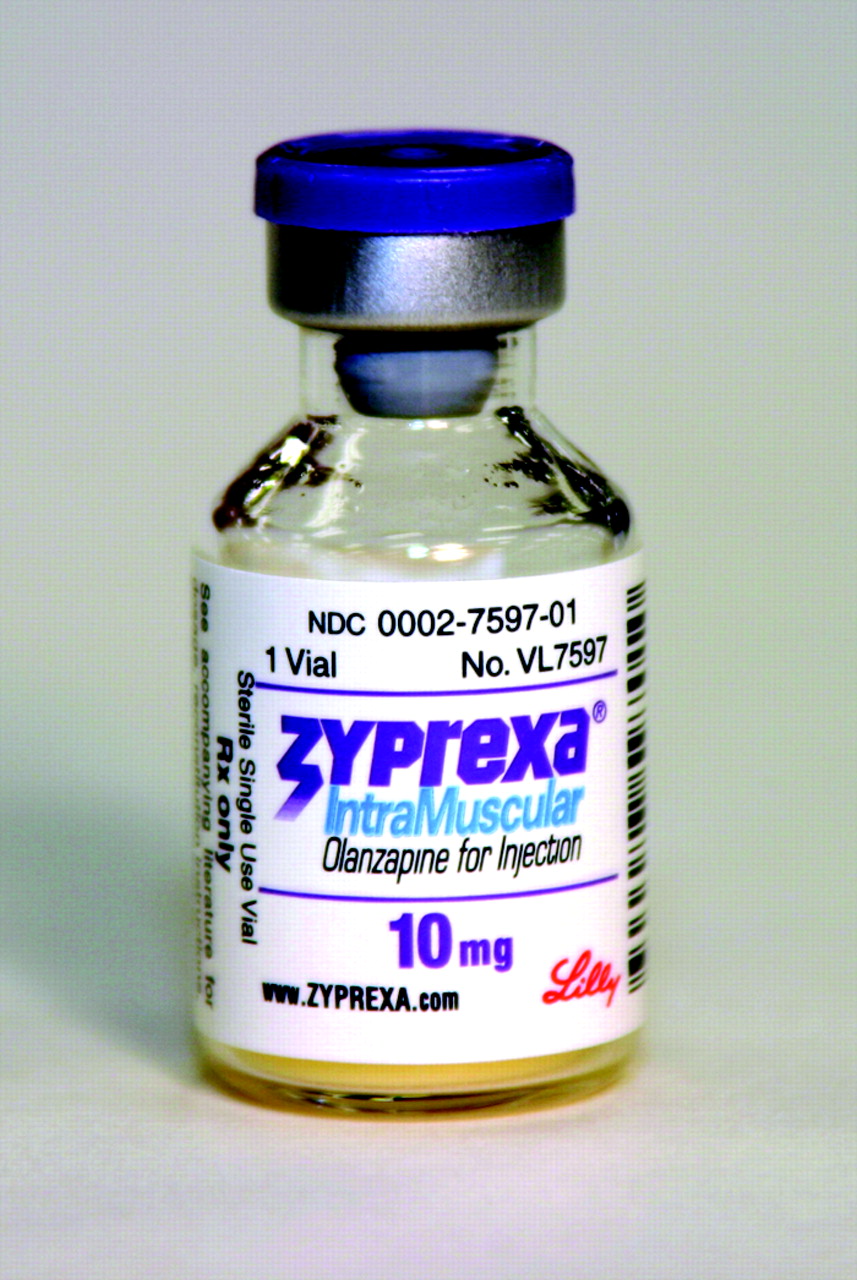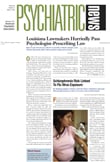The U.S. Food and Drug Administration has approved olanzapine for injection (Zyprexa IntraMuscular) for the treatment of acute agitation associated with schizophrenia and bipolar I mania.
The final approval comes nearly three years after the agency issued an approvable letter for the drug. The long delay between the preliminary approvable letter and the March 30 final approval was not tied to concerns about the efficacy or safety of the drug, but to concerns with manufacturing deficiencies at a Lilly facility slated to produce the new product.
Olanzapine for injection joins ziprasidone for injection (Geodon for Injection), the only other second-generation antipsychotic (SGA) available in a rapid-acting formulation for intramuscular (IM) injection. The two IM medications were considered for approval by an FDA advisory committee during the same February 2001 meeting, and the FDA approved ziprasidone on June 24, 2002.
The addition of olanzapine IM is a significant clinical advance in an area where few options have existed. Traditionally, when physicians have faced patients with acute psychomotor agitation, their treatment choices have been limited to haloperidol IM (Haldol Injectable) or intravenous lorazepam (Ativan IV). However, both of those choices have significant drawbacks that limit their clinical utility. Both are heavily sedating, noted Alan Breier, M.D., chief medical officer and vice president for medical at Eli Lilly and Company in Indianapolis. Clinicians often ended up with a patient who was stuporous rather than calm and quiet, but communicative.
“With [olanzapine IM], you dial in the right level of calming effect, it works quickly, and it is very safe,” Breier summed up. He is now Lilly’s chief medical officer and was heavily involved years ago in the clinical development of olanzapine IM.
With patients who are intensely agitated, the high potential for violence and self-harming behavior makes the situation a psychiatric emergency.
“The clear clinical mandate at that point,” Breier said, “is to reduce the agitation and [thus] directly reduce the risk of violence to the patient or to others.”
The use of haloperidol and lorazepam, however, is not limited only by excessive sedation. Haloperidol injection can be associated with dystonia, an acute, very painful and distorting series of muscle contractions, usually involving the face and/or neck.
One Drug Not Substitute for Other
Lilly knew the development of a safe and effective alternative to haloperidol IM was a clinical priority. Meanwhile, Pfizer was well into its program developing ziprasidone IM.
With two years’ head start on the market, ziprasidone IM is now a well accepted alternative to the old haloperidol injections.
Comparisons of the two IM SGAs is inevitable, mainly because good clinical practice dictates that the most prudent course to take with a patient who has started on a particular drug as an injectable is to continue that patient on the same drug in oral form for maintenance therapy. Choosing which injectable an acutely agitated patient receives in an emergency setting, then, has the potential to influence strongly which medication the patient takes in oral form over the long term.
“Both of these injectables are good drugs, they work well, they work relatively quickly, and they are much safer,” noted Jeffrey Kellams, M.D., a professor of clinical psychiatry at Indiana University School of Medicine. “However, the two injectable drugs are clearly not the same.”
Both medications in oral form are effective, both on positive and negative symptoms. Some studies have indicated that, in oral form, ziprasidone may be more effective on depressive symptoms. No head-to-head comparison between the IM forms of the two SGAs has been published to date, but both are clearly effective, with onset of action within 15 to 30 minutes after injection.
Side Effects Discussed
But Breier agreed that olanzapine IM is quite different from ziprasidone IM. In particular, he said, “the cardiac effects are not there with [olanzapine IM].”
Breier was referring to a prolongation of the QTc—a portion of the cardiac electrical cycle—that has been associated with certain drugs, including ziprasidone. The QTc effect led the FDA to require a bolded warning in ziprasidone’s labeling, cautioning prescribers about the risk of developing fatal heart rhythms as a direct result of the prolongation. However, in more than 4,000 persons treated in clinical trials and nearly three years of worldwide postmarketing experience, not a single case of heart rhythm disturbance has been reported in a patient taking ziprasidone, according to FDA postmarketing surveillance. Clinicians remain vigilant of the risk, noting the theoretical possibility, but wonder whether QTc prolongation is clinically significant.
(On the basis of this history and further clinical data, Pfizer has filed a Supplemental Drug Application with the FDA, asking that the warning language at least be weakened, if not eliminated. That application is pending.)
While olanzapine IM is not associated with any effects on the QTc, oral olanzapine does have significant drawbacks. It has long been associated with significant weight gain (defined as in excess of 30 pounds) in 1 of 3 people taking it. Along with that weight gain, a significant number of patients have developed treatment-emergent diabetes. Olanzapine is also associated with elevations in cholesterol and triglycerides, potentially increasing the patient’s risk of cardiovascular disease. In elderly patients treated with olanzapine for behavioral disturbances associated with dementia, olanzapine has been associated with an increased risk of stroke.
Ziprasidone is not associated with weight gain or consequent diabetes, and a number of clinical studies have indicated that patients who have gained weight on another drug often lose the excess pounds when switched to ziprasidone. Ziprasidone has not been associated with changes in cholesterol or triglycerides. Neither IM SGA has been associated with significant extrapyramidal symptoms.
“There were really no surprises with the IM,” Breier noted, “even though you are dealing with higher levels of medication in the blood, in a shorter period of time, as well as an acutely distressed patient population. The side effects with the IM are the same as, not worse than, the oral formulation.”
Indeed, Kellams agreed, both drugs are much safer than haloperidol. “We’ve really moved out of the haloperidol world and into a new standard of care for the acutely agitated patient. And the patients clearly benefit significantly from that,” he said. ▪

